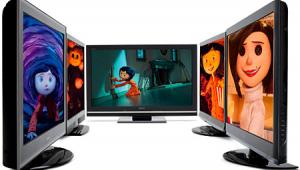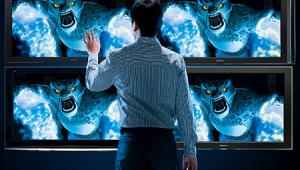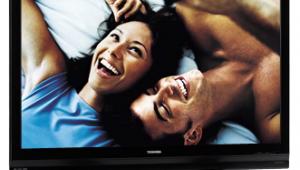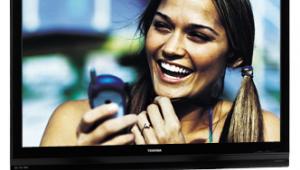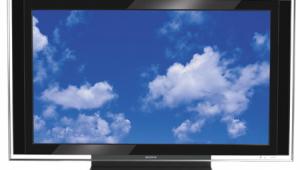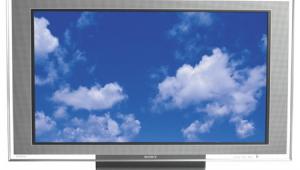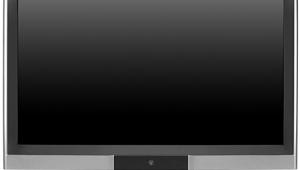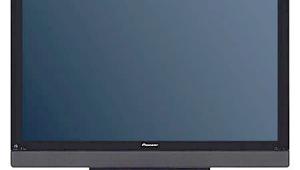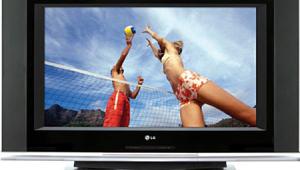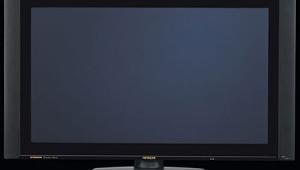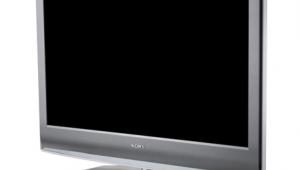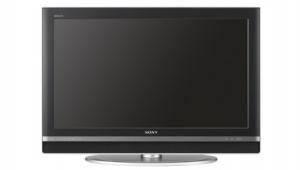Face Off at the HDTV Corral Page 2
The Sony and Panasonic LCD sets offer motion-compensation features that add interpolated frames to upconvert 24-fps or 60-fps sources to the sets’ native frame rate of 120 hertz. This interpolation feature, which gives film-based sources a smooth but video-like look, was turned off for the tests.
All of the sets provide the option to display JPEG photos and some types of videos. These features were not tested.
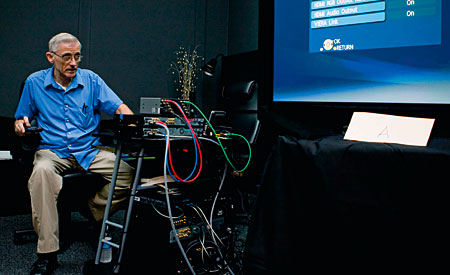
I camouflaged the sets as much as possible to conceal the brands and models. But a fully blind test was not really possible. Most of our panelists know that LCDs look worse off axis, so that was a giveaway to the technologies involved, at least by pairs. Editor Shane arranged for the review samples, so he knew the entrants and their sizes, although he didn’t know where they were positioned (and he later admitted that he guessed wrong on which of the LCDs was which). Also, Scott uses the same studio for his work, so there was no way he could avoid seeing the setup in progress. (I was tempted to play with his head by suggesting that I might have moved the sets around the night before, but I hadn’t, and I didn’t.)
The Program Material
We began with excerpts from two different standard-definition DVDs: Legends of the Fall (non-Superbit) and Shakespeare in Love. These ran at 480p from the players. (Many Blu-ray players, including the two Panasonics we used here, will not output 480i over HDMI.)
Following that, I showed two to three short clips from each of the following Blu-ray Discs: A Passage to India, The Incredible Hulk, Hidalgo, Madagascar, Stargate: Continuum, and Mission: Impossible III. The first four of these were sent to the sets at 1080p/24, the last two at 1080i (converted to 1080i in the player from the discs’ native 1080p/24). In the afternoon session, the panelists also requested to see the opening belowdecks scenes from Master and Commander: The Far Side of the World (shown at 1080p/24).

All of the sets can display 1080p/24 as a direct multiple of 24 fps: 120 fps in the Samsung and Sony, 72 fps in the Pioneer, and 48 fps in the Panasonic. I ran the Pioneer, Samsung, and Sony in this mode. But the Panasonic also offers the option to display a 24-fps source at either 1080p/48 or 1080p/60. I chose the latter. The Panasonic’s peak-white output at 1080p/48 drops by about 30 percent at 1080p/48, which limited its ability to match the other sets’ peak brightness settings. The Panasonic also displayed noticeable flicker at the 48-fps setting.
The Judging
For the composite scores presented for each TV, our panelists judged the sets in four specific performance categories: black level, shadow detail, color, and overall detail (resolution). They judged the fifth category, value, only at the end of the testing, when I revealed the price of each set. In the composite scores for each set, I weighted the first four categories equally. I didn’t include value in this performance rating but kept it strictly separate. I rounded off the raw scores to the nearest half point on our five-point (five-star) rating scale. Incidentally, the references to he and she in the comments are random and do not necessarily provide a clue as to the identity of the judge.
We didn’t rate the sets’ efficiency in the tests, but their power draw is shown in the chart on page 42. Power will depend on the image displayed and the set’s setup. There’s no single source or setup that is completely representative. I used two different test-pattern sources here, with the same settings on each set that we used in the panel tests. The power at 100-percent peak white, full field, is a worst case. The power used with a 100-percent white window is more typical of average program material.
Let the games begin . . .
Panasonic VIERA TH-50PZ800U Plasma HDTV Review and Comments
Pioneer Elite KURO PRO-111FD Plasma HDTV Review and Comments
Samsung LN55A950 LCD HDTV Review and Comments
Sony BRAVIA KDL-55XBR8 LCD HDTV Review and Comments
